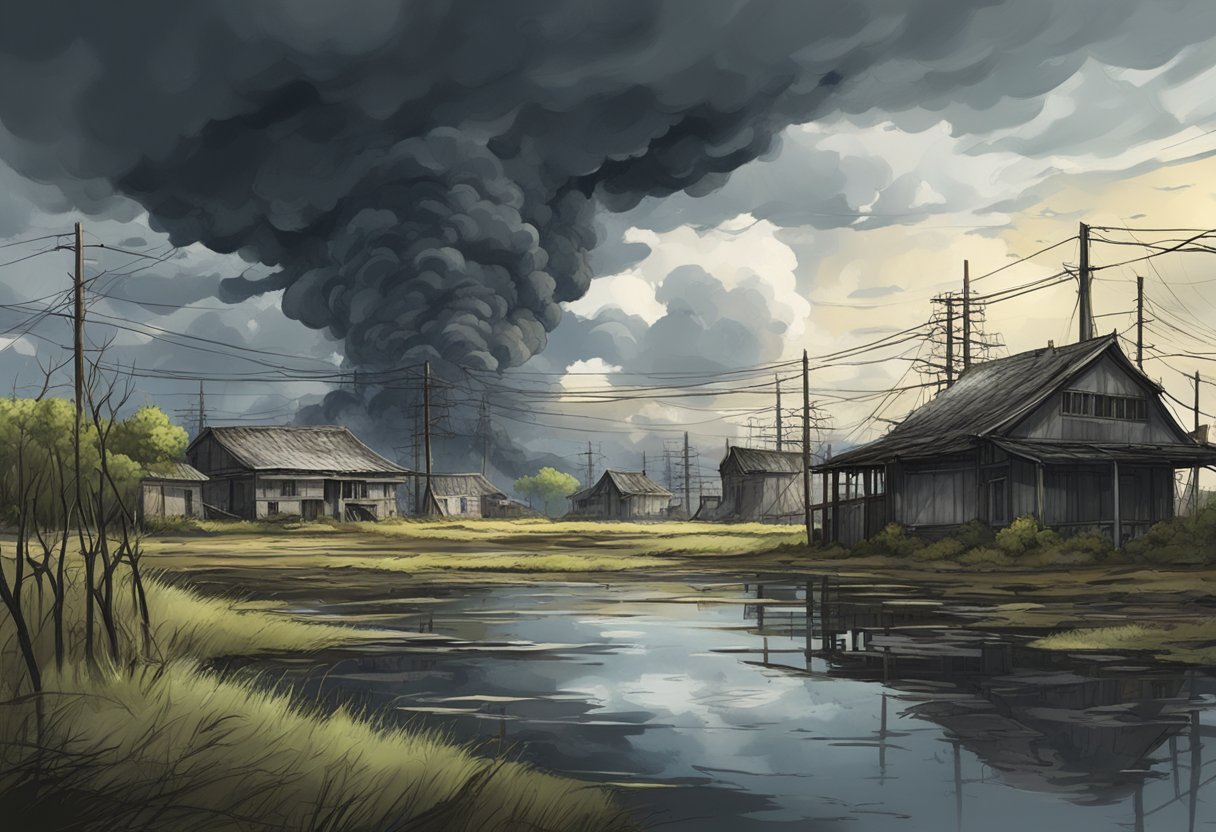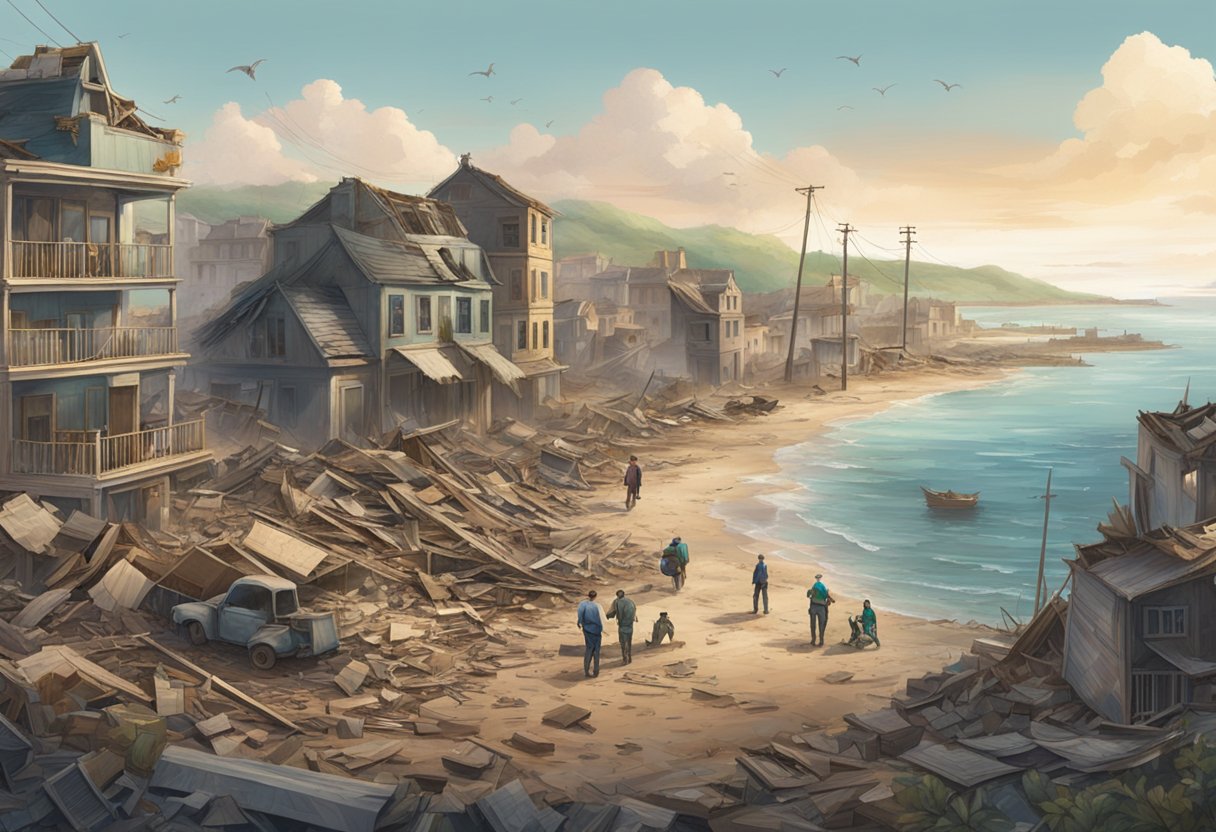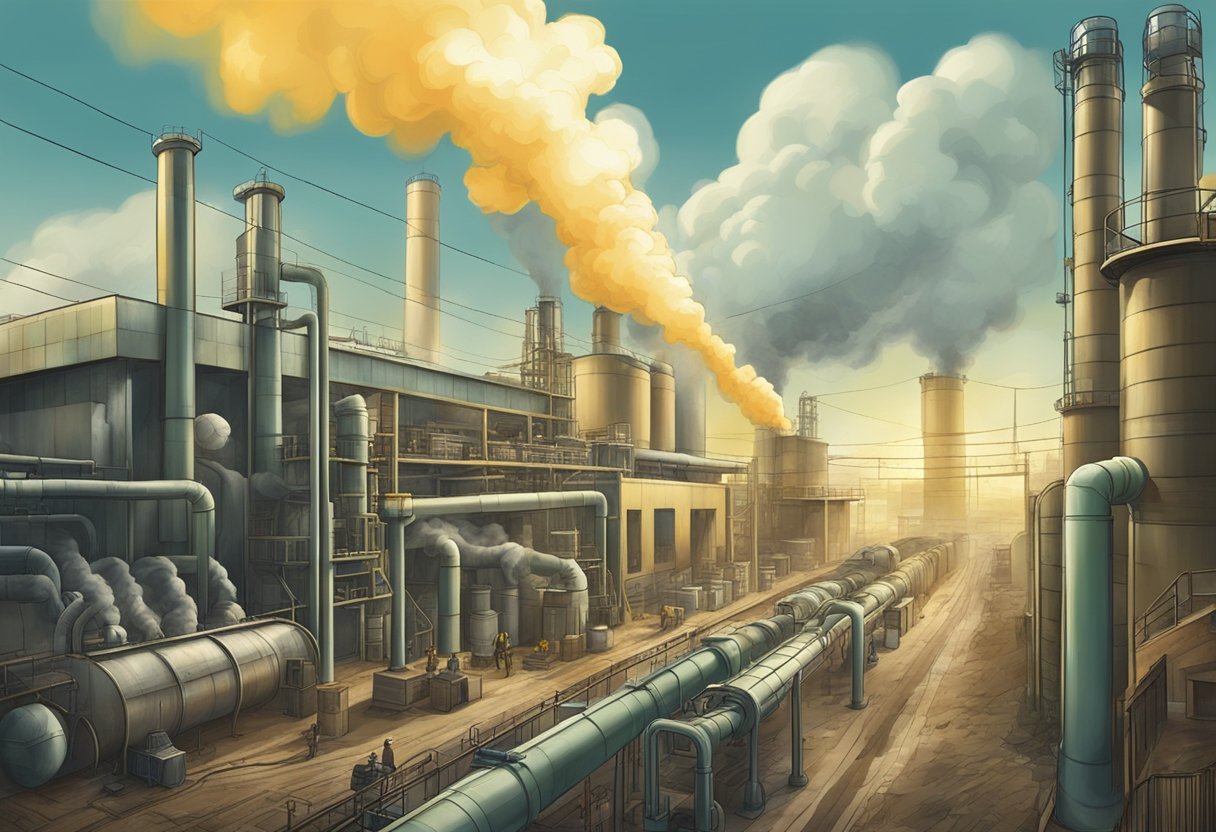The Fukushima Nuclear Disaster: Impact on Japan and Global Implications

The Fukushima Nuclear Disaster in 2011 shook Japan and the world. Triggered by a massive earthquake and tsunami, the meltdown at the Fukushima Daiichi plant was the second worst nuclear accident in history. Ever since, the echoes of this disaster have shaped policies, safety protocols, and public opinions on nuclear energy.
Japan, with its history of earthquakes, had to reevaluate its preparedness and disaster response. The plant's meltdown exposed flaws in safety measures and emergency planning, sparking worldwide debate on the viability of nuclear energy. Countries around the globe scrutinized their own nuclear safety standards, leading to stricter regulations and alternative energy investments.
Beyond immediate safety concerns, Fukushima's impact stretched into health, environmental, and socio-economic realms. Contaminated regions saw long-term evacuations, health scares over radiation exposure, and significant economic fallout. The disaster's reverberations are still felt, driving continuous dialogue on sustainable and secure energy solutions.
Historical Context

In 2011, Japan faced one of its most challenging times, marked by a massive earthquake and a catastrophic nuclear accident. These events not only changed lives but also had lasting impacts.
Earthquake and Tsunami: The Natural Disasters
On March 11, 2011, the Great East Japan Earthquake struck off the Pacific coast of Sendai with a magnitude of 9.0. It was one of the most powerful earthquakes ever recorded in Japan's history. This seismic event triggered a massive tsunami, with waves reaching up to 40 meters in some areas. The tsunami caused widespread devastation along Japan's northeastern coast. Thousands of lives were lost, homes were destroyed, and entire communities were wiped out. Critical infrastructure was heavily damaged, making rescue and recovery efforts extremely difficult. The combination of the earthquake and the tsunami created a humanitarian crisis that required both national and international response.
Fukushima Daiichi Plant: Before the Disaster
The Fukushima Daiichi nuclear plant, operated by the Tokyo Electric and Power Company (TEPCO), was located about 100 km south of Sendai. It had six reactors and was one of the largest nuclear power stations in the world. Before the disaster, it was considered a crucial part of Japan's energy strategy. The plant was designed to withstand earthquakes, but the scale of the 2011 quake and the resultant tsunami exceeded its safety margins. At the time of the earthquake, the plant was in operation, contributing significantly to the national grid. Safety protocols existed, but the unprecedented scale of the natural disasters overwhelmed the plant's defenses. This led to the failure of cooling systems, hydrogen explosions, and significant release of radioactive materials.
Chronology of the Fukushima Disaster
The Fukushima nuclear disaster began on March 11, 2011, triggered by a massive earthquake and tsunami. This sequence of events led to significant damage to the Fukushima Daiichi nuclear power plant, causing a nuclear accident and an extensive crisis management effort.
The Initial Impact
On March 11, 2011, a 9.0-magnitude earthquake struck off the coast of Japan, causing widespread devastation. The earthquake's epicenter was about 130 kilometers east of Sendai. Minutes later, a powerful tsunami followed, with waves reaching up to 40 meters high in some areas.
The Fukushima Daiichi nuclear power plant, located on the Pacific coast, was severely affected. The tsunami resulted in flooding, damaging the plant's backup generators, and leading to a failure of the cooling systems. This failure caused overheating in the reactors, leading to a series of explosions and the release of radioactive materials into the environment.
Response and Crisis Management
In the immediate aftermath, the Japanese government, led by Prime Minister Naoto Kan, took urgent measures to contain the situation. Evacuations were ordered for areas within a 20-kilometer radius of the plant, affecting around 160,000 residents. Efforts were also made to cool the reactors by injecting water, though this proved challenging due to high radiation levels.
International assistance was sought, and experts from various countries collaborated to manage the crisis. Robots were deployed to assess damage in areas too hazardous for humans. Long-term measures included the construction of a containment system to prevent further leaks.
Despite these efforts, some regions remain uninhabitable, and the cleanup and decontamination process is ongoing more than a decade later. The disaster highlighted the need for improved safety measures in nuclear plants, particularly in earthquake-prone regions.
Technical Explanation of the Nuclear Accident

The Fukushima nuclear disaster involved multiple reactor failures, hydrogen explosions, and the release of radioactive materials. This section clarifies what happened during the disaster from a technical perspective.
Reactors and Cooling Systems Failure
The Fukushima Daiichi nuclear power plant had six reactors. On March 11, 2011, a 9.0-magnitude earthquake struck Japan, followed by a massive tsunami. This natural disaster knocked out the external power supply to the plant and damaged the backup generators.
Without power, the cooling systems failed. Reactors need continuous cooling to prevent overheating. When the cooling systems stopped, reactor cores began to overheat. This led to partial meltdowns in reactors 1, 2, and 3. The loss of cooling resulted in the fuel rods being exposed, causing them to overheat and melt, releasing radioactive materials.
Hydrogen Explosions and Radiation Release
As the reactor cores overheated, water in the reactors split into hydrogen and oxygen. The buildup of hydrogen gas created an explosive atmosphere within the reactor buildings. Over the next few days, hydrogen explosions occurred in reactors 1, 2, and 3, blowing off the roofs of these reactor buildings.
These explosions released significant amounts of radioactive materials into the environment. Radiation levels spiked, prompting evacuations and raising concerns about long-term health effects. Radioactive isotopes such as iodine-131, cesium-137, and strontium-90 were dispersed in the area, contaminating air, water, and soil.
Environmental and Health Impact

The Fukushima Nuclear Disaster had significant effects on both the environment and public health. Radiation and radioactive contamination were major concerns, impacting human health and the surrounding ecosystem.
Radiation Exposure and Public Health
Radiation exposure from the Fukushima disaster raised concerns about long-term health effects. The World Health Organization reported increased cancer risks, especially thyroid cancer in children. The release of radioactive iodine and cesium-137 into the air and water contributed to these risks.
Residents evacuated from the area faced both physical and psychological stress. Monitoring continues to assess ongoing risks and inform health interventions. Measures were taken to reduce radiation exposure, such as distributing iodine tablets and decontaminating affected zones.
Environmental Contamination and Recovery
The environment around Fukushima experienced heavy contamination. The radioactive fallout affected soil, forests, and waterways. Cesium-137 and iodine-131 were the primary contaminants. This led to widespread bans on local agricultural products and fishing.
Efforts to decontaminate the area included removing topsoil and washing surfaces. Radioactive water stored at the plant remains a challenge, with debates about safe disposal methods. Wildlife in the area showed mutations and population changes due to radiation exposure. Recovery is ongoing, with continuous monitoring of radiation levels and environmental health.
Social and Economic Consequences

The Fukushima Nuclear Disaster had profound social impacts on the residents and far-reaching economic consequences for Japan and Fukushima Prefecture. The following sections highlight key social disruptions and economic burdens.
Evacuation and Relocation of Residents
Following the disaster, mandatory evacuation orders were issued for areas within 20 kilometers of the Fukushima Nuclear Power Plant. Over 150,000 people had to leave their homes, many of whom relocated multiple times. The large scale of displacement brought significant disruption to daily lives.
Evacuees faced numerous challenges, including inadequate temporary housing, job loss, and social isolation. Communities were torn apart as families and friends were spread across various evacuation centers. Mental health issues, such as anxiety and depression, increased due to these stressors.
The process of returning home has been slow and complicated. Decontamination efforts are ongoing, but only a fraction of the residents have returned. Fukushima Prefecture remains marked by abandoned homes and schools, symbolizing the lingering social trauma.
Economic Implications for Japan and Fukushima Prefecture
The disaster placed a heavy economic burden on Japan. Initially, the cost of decommissioning the Fukushima Daiichi Nuclear Plant was estimated at ¥5 trillion, but this number has now skyrocketed to around ¥21.5 trillion (US$187 billion). The expenses include decontamination, compensation for evacuation victims, and rebuilding infrastructure.
Fukushima Prefecture experienced significant economic decline due to the disaster. Agricultural and fishing industries faced enormous losses as radiation fears led to bans on their products. The tourism sector also plummeted, with visitor numbers drastically reduced.
Japan as a whole had to rethink its energy policies, leading to a shutdown of all nuclear power plants temporarily, affecting the nation's stability. The disaster accelerated the shift towards renewable energy sources, but the economic recovery has been slow and costly.
Response by National and International Bodies
The Fukushima nuclear disaster required swift actions from both national and international entities. This section examines the detailed responses from the Japanese Government and the International Atomic Energy Agency (IAEA).
The Japanese Government's Handling of the Crisis
The Japanese Government faced immediate and severe challenges following the Fukushima disaster. They initiated a large-scale evacuation affecting thousands of residents near the Fukushima Daiichi plant. The Nuclear Regulation Authority was established in 2012 to enhance the independence and effectiveness of nuclear oversight.
In the immediate aftermath, the Prime Minister's Office worked with the NSC to attempt to control the situation. They were criticized for delays and communication lapses. Efforts included deploying Self-Defense Forces, coordinating with international bodies, and managing the decontamination process to ensure public safety. Over time, the government has taken steps to improve disaster response frameworks and enhance nuclear safety protocols.
International Atomic Energy Agency's Involvement
The International Atomic Energy Agency (IAEA) played a crucial role in responding to the Fukushima disaster. They provided technical support, conducted safety assessments, and offered recommendations. An expert mission was dispatched to Japan to understand the incident's full impact and aid in mitigating further risks.
The IAEA worked closely with Japan to monitor radiation levels and ensure transparent reporting on the plant's status. They also facilitated international cooperation, bringing expertise from various countries to address the reactor's stabilization and decommissioning phases. In subsequent years, the IAEA has continued to advise on long-term safety measures and the development of more resilient nuclear regulatory frameworks globally.
Post-Fukushima Nuclear Policies
Following the Fukushima nuclear disaster, there have been significant changes to nuclear energy policies in Japan and other countries. The shifts in Japan’s energy policy and the global debate on nuclear energy highlight the complex reactions to the disaster.
Shifts in Japan’s Energy Policy
Japan faced major challenges after the Fukushima accident. Nuclear power generation was significantly reduced, forcing the country to rely more on fossil fuels. This caused a rise in electricity rates and carbon emissions.
The government re-evaluated its energy policy, emphasizing renewable energy. Efforts to increase public engagement were also crucial, as public trust in nuclear energy had been severely damaged. Certain policies now focus on improving safety standards and regulatory frameworks for nuclear plants.
Global Reactions and Nuclear Energy Debate
The Fukushima disaster also triggered global reactions. Some countries re-evaluated their stance on nuclear power. Nations like Germany decided to phase out nuclear energy completely, shifting towards renewables.
In contrast, other countries maintained or even expanded their nuclear programs, highlighting its role in reducing greenhouse gas emissions. The debate continues, balancing nuclear energy's potential benefits against safety concerns. The nuclear industry worldwide faces the challenge of securing public support while enhancing safety measures.
Lessons Learned and Future of Nuclear Power
The Fukushima disaster highlighted the importance of improving safety measures at nuclear power plants and addressing challenges in nuclear energy's future usage.
Improving Nuclear Safety and Preparedness
The Fukushima incident underlined the need to enhance nuclear safety protocols. Lessons include establishing stronger defense systems against natural disasters like earthquakes and tsunamis.
Improvements needed:
- Better structural designs for reactors
- Rigorous safety drills
- Reliable backup power systems
It’s crucial to constantly update safety standards based on new information. Governments and regulatory bodies must ensure nuclear plants comply with these updated guidelines. Adopting these practices can mitigate risks and safeguard against potential accidents, emphasizing a proactive approach to nuclear safety and preparedness.
The Future of Nuclear Energy
With enhanced safety measures, nuclear energy can still play a vital role in meeting global energy needs.
Potential benefits:
- Low greenhouse gas emissions
- High electricity output
The transition to renewable energy sources like wind and solar is important, but nuclear power provides a steady energy supply that complements these intermittent sources. Investing in new technologies, such as small modular reactors (SMRs), can make nuclear energy safer and more efficient. These advancements can help maintain and expand nuclear capacity while addressing safety concerns, making nuclear energy a viable option for the future.
Cultural and Psychological Effects
The Fukushima Nuclear Disaster had a profound impact on both the mental health of residents and the cultural landscape of Japan. This section examines the effects on citizens and workers as well as the representation of the disaster in media and art.
The Societal Impact on Citizens and Workers
The disaster profoundly affected the mental health of people living near the Fukushima Daiichi Nuclear Power Plant. Many residents experienced panic and anxiety in the immediate aftermath. Over time, issues such as depression and alcoholism became more prevalent.
The Fukushima 50, a group of workers who stayed behind to manage the crisis, faced severe stress and long-term psychological strain. Their bravery was highlighted in numerous reports, but the mental toll on them remains significant.
Public stigma also emerged, with evacuees facing discrimination. For instance, a 13-year-old boy was bullied for being a "nuclear evacuee," showing the social challenges many people faced.
The Fukushima Disaster in Media and Art
Media like The New York Times extensively covered the disaster, bringing international attention to the plight of the residents. Documentaries, films, and literature have since explored the emotional and cultural aftermath.
Art has become an important medium to process and express the collective trauma. Various exhibitions and public art projects have focused on the disaster, providing a space for communal healing and understanding.
In film, the disaster has been depicted in various ways, from dramatic retellings to deeply personal stories. This artistic exploration helps keep the conversation about the Fukushima disaster alive, reminding society of its lasting impacts.
Conclusion
The Fukushima Daiichi Nuclear Plant disaster in 2011 served as a significant wake-up call for the world.
On March 11, 2011, an earthquake and tsunami led to severe core damage in three reactors, causing hydrogen explosions. The release of radioactive materials had serious consequences.
This incident highlighted weaknesses in disaster preparedness. Both local and international communities recognized the need for better safety protocols.
In Japan, the disaster led to a re-evaluation of nuclear power policies. The government and industry experts, including those from the Harvard Kennedy School, examined the failures. Their research has focused on improving response strategies and ensuring future safety.
Internationally, the Fukushima event prompted many countries to rethink their nuclear energy stance. Some nations paused or entirely stopped their nuclear programs.
The disaster impacted not just the environment but also local communities. Many people were displaced, and the local economy suffered. Efforts to clean up and decontaminate the area have been ongoing for years.
Preventative measures and safety enhancements have been implemented worldwide to avoid similar disasters in the future.
While nuclear power remains a contentious issue, the lessons learned from Fukushima are clear. The focus continues to be on ensuring the safety and well-being of communities near nuclear facilities.




